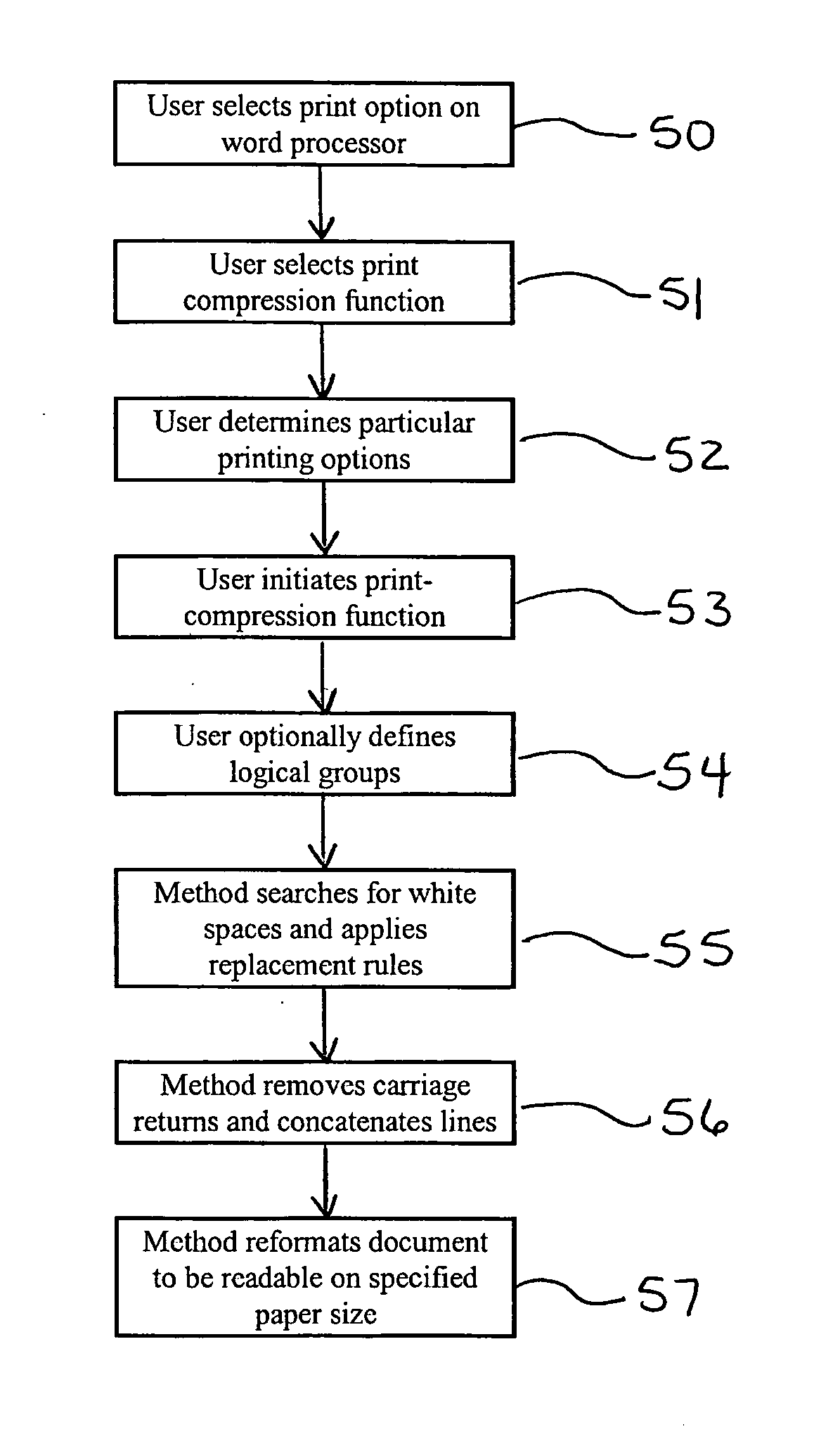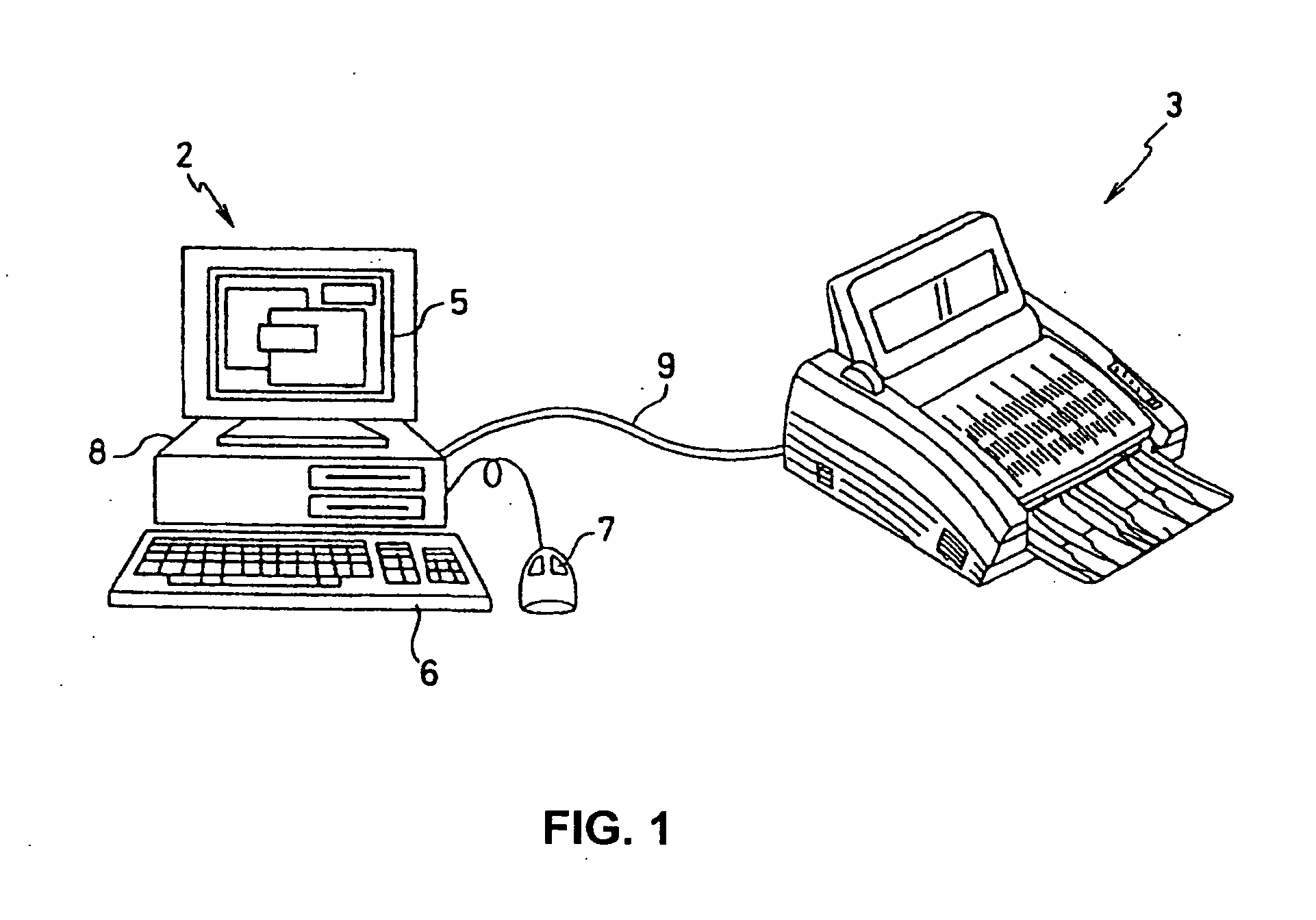Method and system to allow printing compression of documents
- Summary
- Abstract
- Description
- Claims
- Application Information
AI Technical Summary
Benefits of technology
Problems solved by technology
Method used
Image
Examples
Embodiment Construction
[0026] The present invention provides automated method to reduce the amount of paper required to print certain documents. In application, the method of the invention scans through a document and modifies the document by removing unnecessary space (white space) on the document in accordance to predefined criteria for the document. The modified document is then printed using less paper. The following example shows how the invention can be applied. A person wants to print a 30-page document containing a scripting language source code listing. Upon printing the 30-page document, it is apparent that most of the white space could be eliminated. Additionally the comments could also be removed. The invention adds the preprinting functionality to reduce this amount of white space such that the entire printout is now only 10 pages. To access this function, a person would be presented with options during the printout function to allow such a compressed printout. Configuration changes to the do...
PUM
 Login to View More
Login to View More Abstract
Description
Claims
Application Information
 Login to View More
Login to View More - Generate Ideas
- Intellectual Property
- Life Sciences
- Materials
- Tech Scout
- Unparalleled Data Quality
- Higher Quality Content
- 60% Fewer Hallucinations
Browse by: Latest US Patents, China's latest patents, Technical Efficacy Thesaurus, Application Domain, Technology Topic, Popular Technical Reports.
© 2025 PatSnap. All rights reserved.Legal|Privacy policy|Modern Slavery Act Transparency Statement|Sitemap|About US| Contact US: help@patsnap.com



